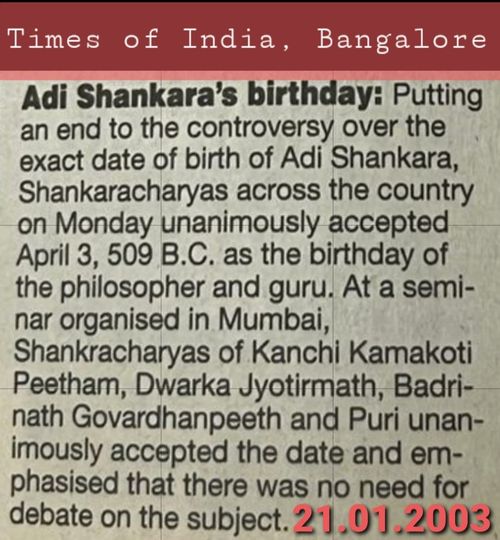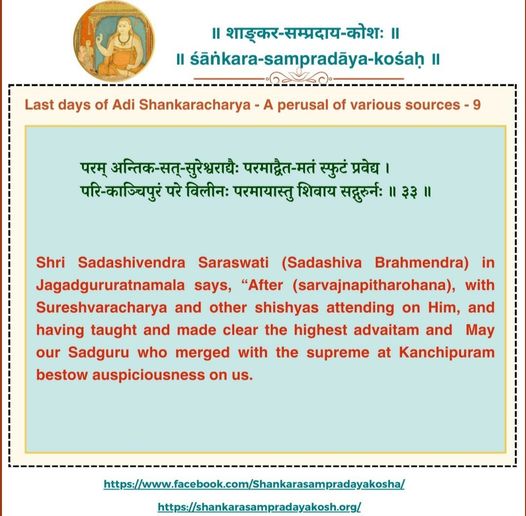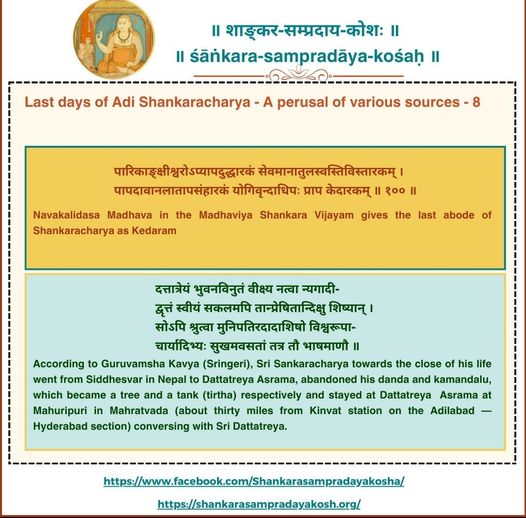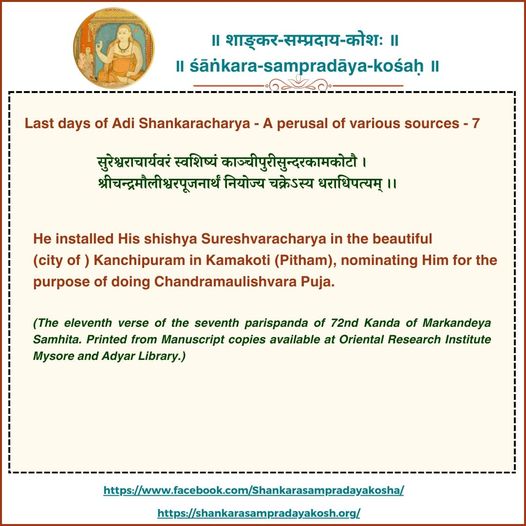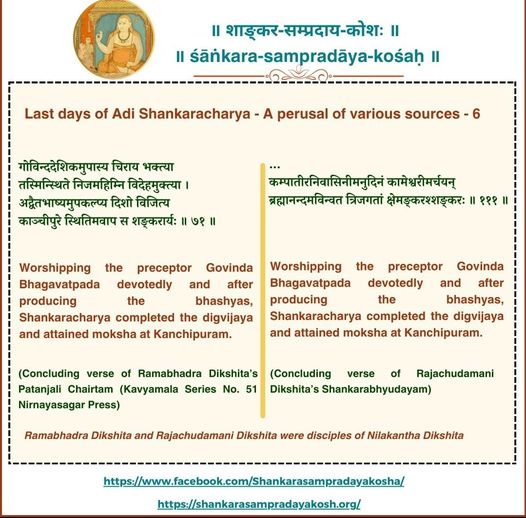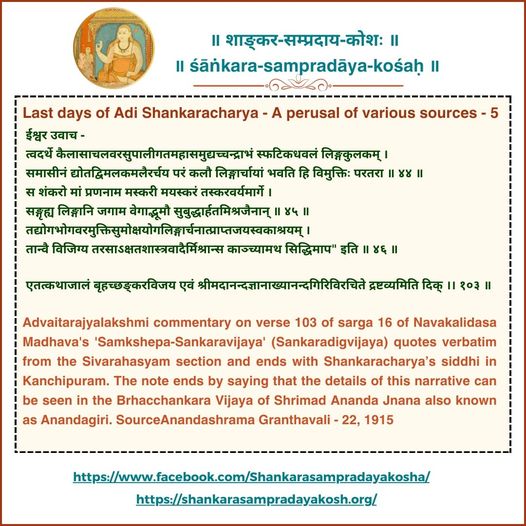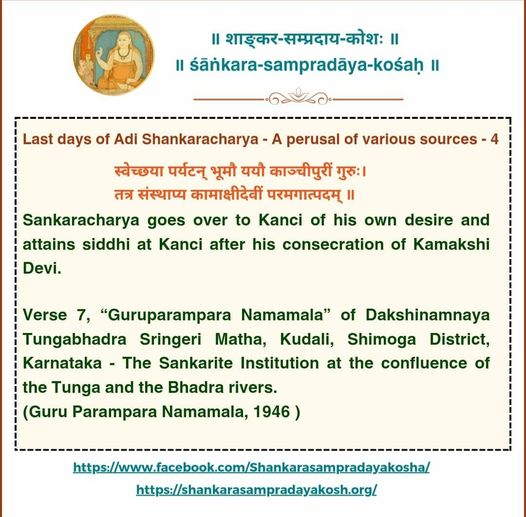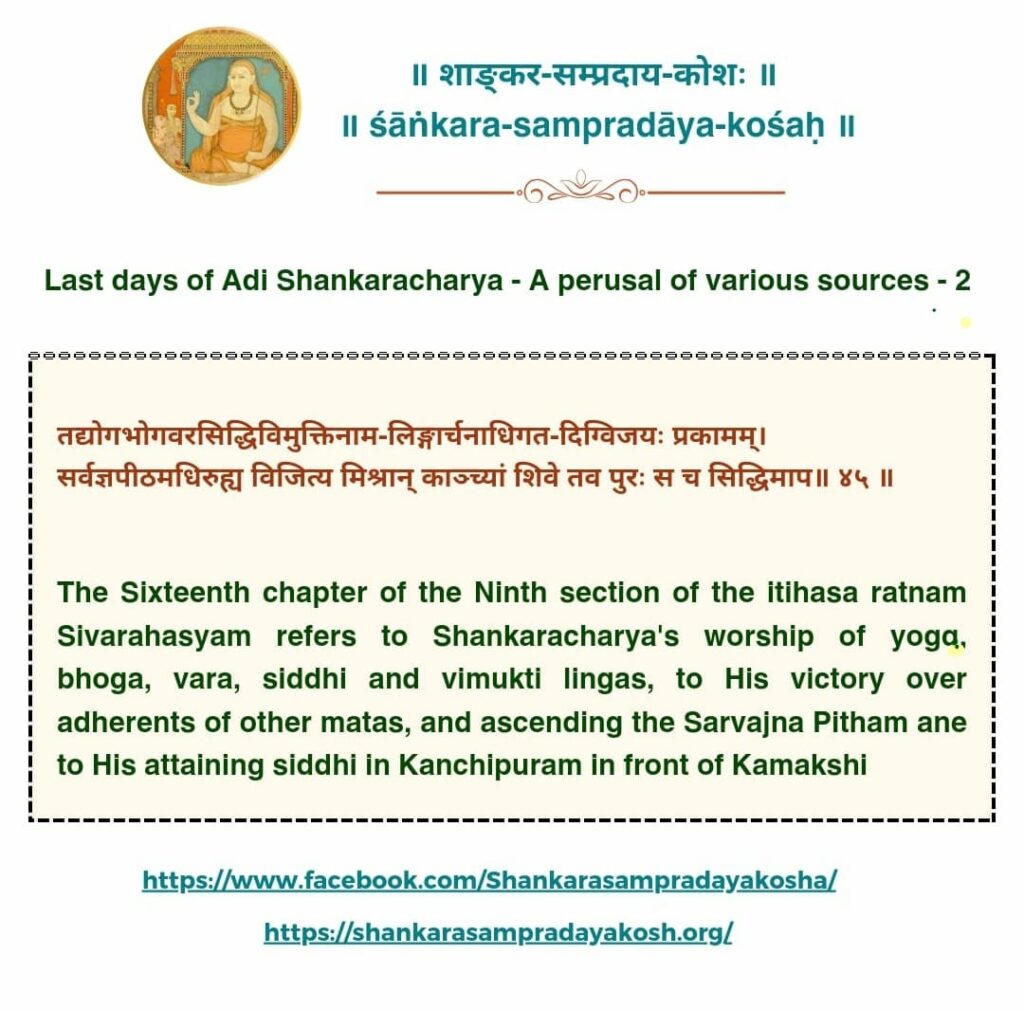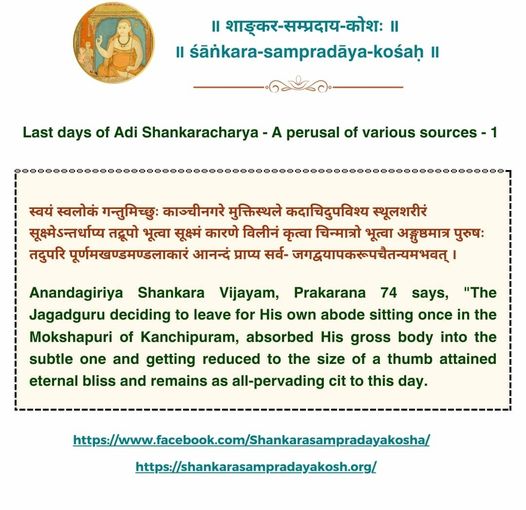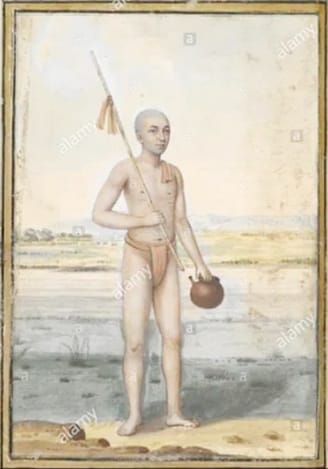“Putting an end to the controversy over the exact date of birth of Adi Shankara, Shankaracharyas across the country on Monday unanimously accepted April 3, 509 B.C. as the birthday of the philosopher and guru. At a seminar organised in Mumbai, Shankaracharyas of Kanchi Kamakoti Peetham, Dwarka Jyotirmath, Badrinath and Govardhan peeth Puri unanimously accepted the date and emphasised that there was no need for debate on the subject.”
(Times of India, Bangalore : 21.01.2003)
